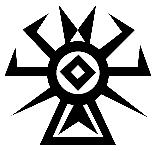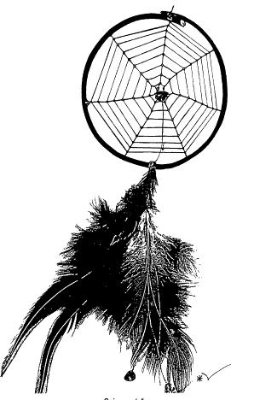Job fear? Grow your career in SPIDER webs
"When I see a spider, I usually ask someone to kill it for me," says the arachnophobe. "And even after it's dead, I won't go near the corpse for 24 hours."

Feeding Fear
Fight or flight. How true in life—and in business.
Fear stems from the most primordial part of the brain. Whether caused by a threat or condition in the environment, fear most often is overcome through repeated exposure to the stimulus in a process of desensitization. And just as the erratic legs of a spider trigger fear in many, so do we see the impact of changes generating fear at work.
From mergers to leadership changes, from deciding whether to leave or figuring out whether to stay, circumstances in jobs can sometimes create an "in the box" feeling that disrupts your state of flow.
But if the grass is greener elsewhere, you've now decided to look around. And now it's scary to interview, intimidating to reach out to strangers for informational interviews, and completely paralyzing staring at a blank cover letter that desperately needs to be written. Then sent.
"Am I growing and learning?"
"Do I feel stifled or limited here?"
"I don't know how to get ahead. Please help me find my way!"
Fear is universal. It's not worth avoiding it. But there is a way you can focus your energy, look at your situation, and move forward productively so fear doesn't cause you career regret with something you wish you pursued, said, or did.
Spiders Inspire
Ironically, a critter that can often trigger fear is an unlikely source of inspiration for weaving your way with creativity, hope, strength, vision, and focus.
Take a look at archaeology and mythology. Spiders link past and future.
And from "life weavers" to "symbols of wisdom," spiders appear in paintings, petroglyphs, architectural design, carvings, vases, hieroglyphs, and land formations across Europe, Asia, Africa and the Americas for thousands of years.

The aerial view of the mysterious sacred landscape called "Nasca lines" (ancient geoglyphs of southern Peru) reveals a giant spider created more than 2,000 years ago through repetitive footpaths, removal of rocks, and ceremonial walking across miles of land. [Photograph by Robert Clark]
For the Hopi [Hisatsinom] in the Southwestern U.S. tribes, spiders are associated with the very important art of weaving. Born from the legend of the Spider Woman or Spider Grandmother, the spider goddesses give their assistance to the people as heroines. Spider Woman served as a messenger and teacher for the Creator and was an intercessor between deity and the people.

To the Osage Nation [Niukonska] of the Ohio and Mississippi River Valley, spiders were a special symbol of patience, strength, and endurance. "Grandson," said the spider, "look upon me. I am patient. I watch and I wait. Then all things come to me. If your people learn this, they will be strong indeed." [An Osage Spider Legend.]
To the Blackfoot [Niitsitapi] of Montana, Idaho and Ontario, Canada, spiders represented intelligence and skillfulness.

The Chippewa [Ojibwe] located across present day Montana, North Dakota, Wisconsin, Michigan, Manitoba, Ontario, Quebec, and Saskatchewan associated spider webs with their dream catchers, a type of traditional hand-woven Ojibwe craft meant to filter out bad dreams. The good dreams pass through the center hole to the sleeping person. Evil thoughts are captured in the web, where they will die in the rays of the morning sunlight.
In Cherokee [Ani-Yunwiya] mythology, the water spider is said to have first brought fire to the inhabitants of the earth in the basket on her back.

The Mississippian culture (also known as "Mound Builders" from 800 to 1600 CE) lived across a wide region from the Mississippi River valley through Southeastern United States.
They believed the universe consisted of an Underworld ruled by spirit snakes, an Upper World inhabited by spirit birds, and the people of the Earth ruled by spirits like the Spider.
The Mississippian spider symbol worn as a necklace (also known as a gorget amulet) was believed to have possessed protective properties for its wearer [Lakeview Museum of Arts & Sciences Collection].

S.P.I.D.E.R. Career Focus
If you find yourself lost, confused, or faced with fear on the job, learn how to face your fear to better know yourself and weave a direction.
Consider these tactics:
S. Serendipity is a choice
Life is often about luck. About being in the right place at the right time either for your current role or in job seeking. Get yourself in an environment surrounded by people whom you'd like to emulate. Learn how to find your fit in your space.
P. People hire people
Companies don't hire people. People hire people. So mingle with people regularly and build relationships internally and externally. Network.
I. Influence comes from passion
Work won't seem like work if you're passionately pursuing something you love. Hold on to what interests you in life and your ability to influence others, to persuade, to communicate effectively will come from the heart.
D. Desires matter
Defining what you want and your priorities in life will help you refine and focus. From locations, to industries, to functions...desires help you target and find that intersection with what you offer and the company needs at this moment.
E. Energy flows two ways
Hiring managers want to know the real you. Keep your energy alive at work, at interviews. Discover how to develop your storytelling skills. And remember that relationships are two-way. Put yourself in your managers' shoes to see another perspective other than your own and leverage networking as a mutual benefit.
R. Resilience
While "emotional intelligence" is the big buzzword, we know that "grit" and "resilience" help you survive the ups and downs in your career. Seeking a new job? Know that it's a marathon, not a sprint. Feeling complacent at work? We all hit speed bumps in the road in life. Keep driving and moving forward with optimism, focus, and resilience after setbacks.
Learn How to Weave a Web
Your web is your network. Your web connects you to new people, new companies, and most importantly, new opportunities. Only you can create it.
Your future is tied to whom you know.
In North America, the career changers and most successful job hunters are able to navigate people and company opportunity extremely well. They understand the economics of networking—it's not only about you.
To function in a web of opportunity, you need to figure yourself out in relation to what the company needs.
Which means...you really need to research a company. Process their challenges. Know their opportunities. Most of all, understand their timing for hiring or organizational growth patterns and shifts.
Design Your Web
In the tradition of the Hopi Spider Woman, you'll find joy in your work if you can weave a thread connecting experiences that focus on Serendipity, People, Influence, Desires, Energy, and Resilience levels.
Identify whom you know in each aspect of your web.
Stay connected and reach out to your web regularly.
Talk to friends of friends. Ask them how they got to where they are.
Have lunch with co-workers you don't normally interact with.
Write core principles for yourself. Daily, weekly or monthly. Set targets.
Understand your energy drivers and drainers.
Remember to ask yourself, "What's the best that could happen if I take a risk?" "What's the worst thing that could happen if I don't pursue this?" "What's holding me back?"
Design a path forward with your web of connections that shares and recognizes you while supporting your talent in being resilient and positive.
Start growing your career. Face your fears.
Create your S.P.I.D.E.R. web today.
Photographs (1) Nasca lines with plane from National Geographic (2) open source (3) open source (4) Wikipedia article (5) Illinois State Museum.
